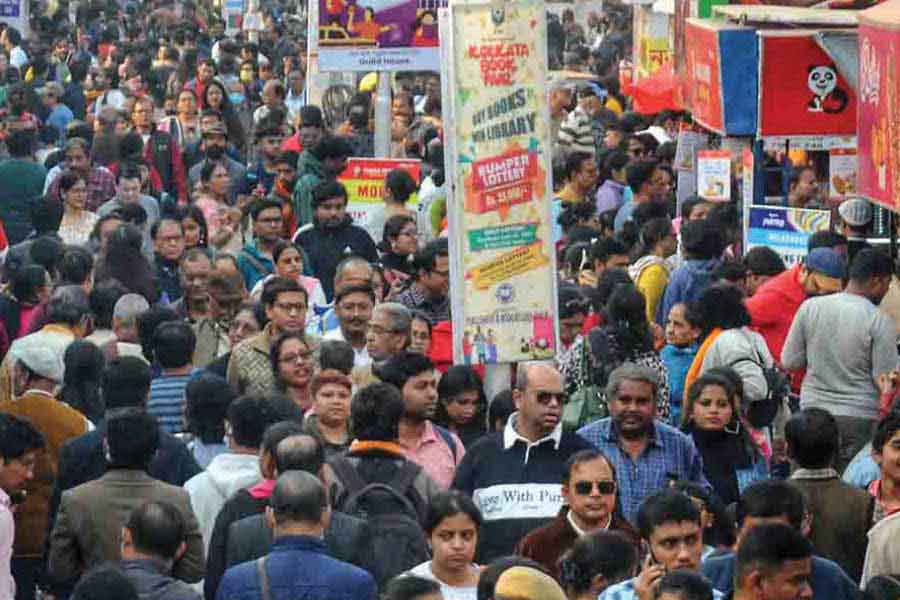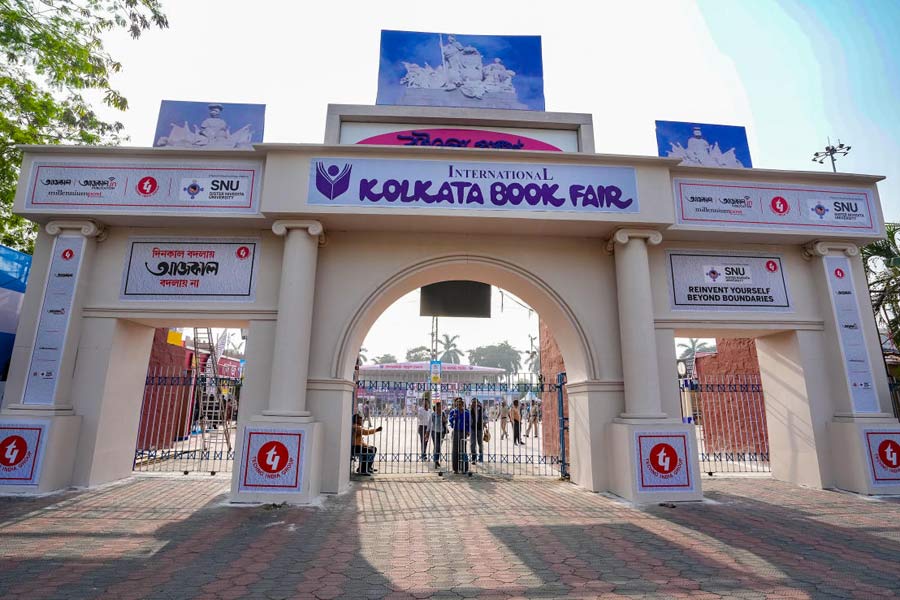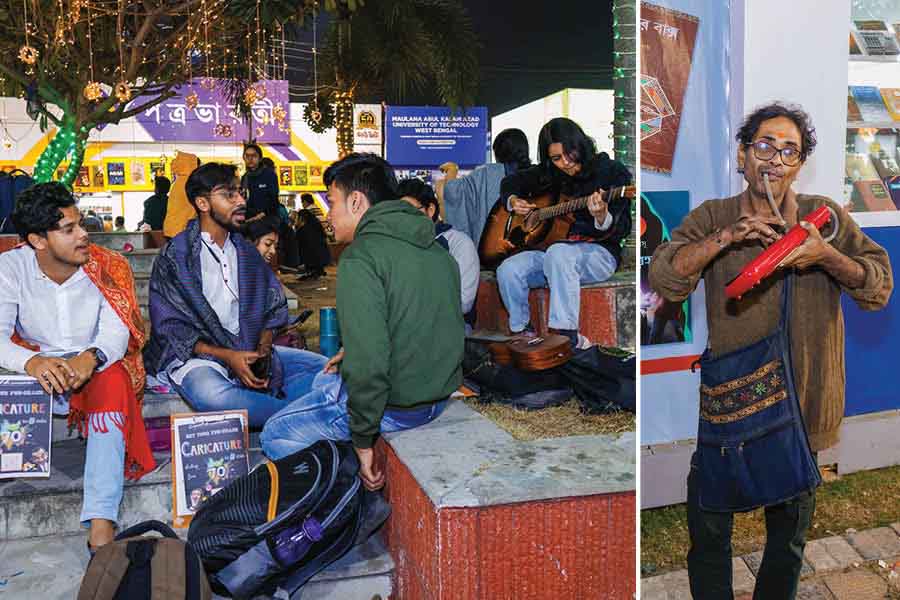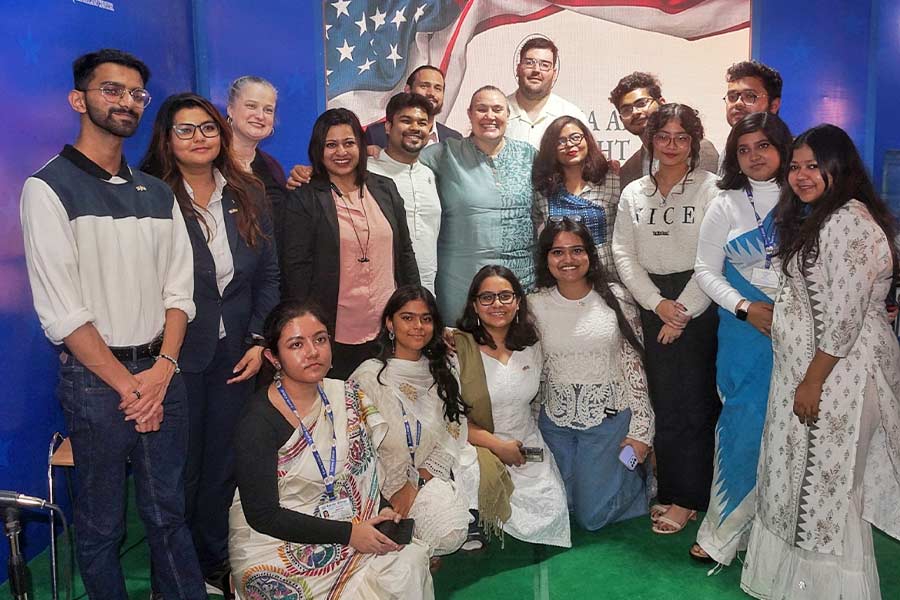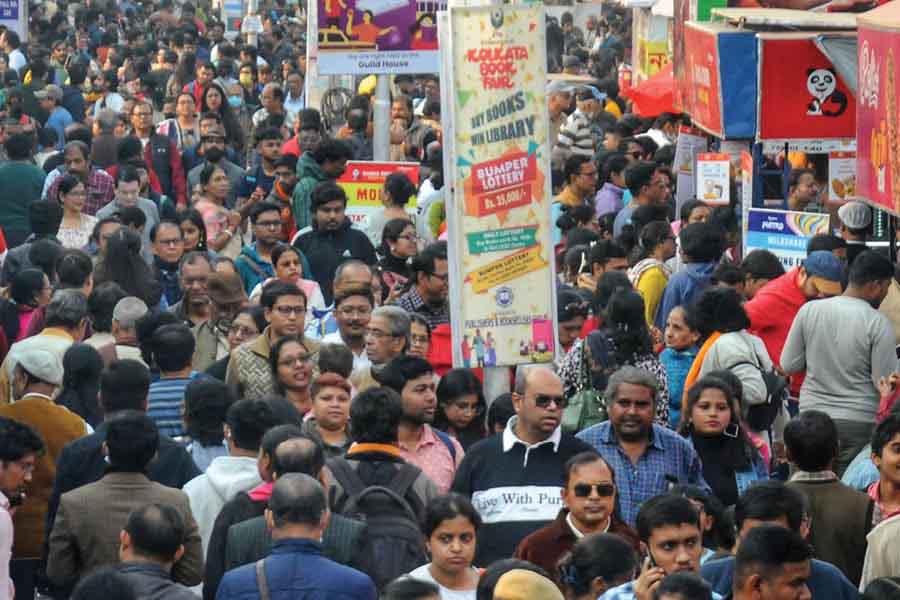The just concluded 47th International Kolkata Book Fair registered a record footfall, almost two-thirds of the metropolis’ population, and record sales figures but still a few questions popped up on the environmental and other aspects of the fair.
Based on first-hand experience, inputs from senior officials of the fair organiser Publishers and Booksellers Guild, various stall regulars and fair regulars, this reporter has listed the hits and misses of the fair — touted to be the biggest in the world — and suggested improvements.
Hits
Managing waste
Perhaps the most improved facility at the fair. The fairground, despite having drawing two lakh visitors each day on an average, looked generally clean, thanks mainly to the waste collectors of Bidhannagar Municipal Corporation, who seemed omnipresent and worked round-the-clock. The Guild should think about awarding these workers; most of them being women.
Rising popularity
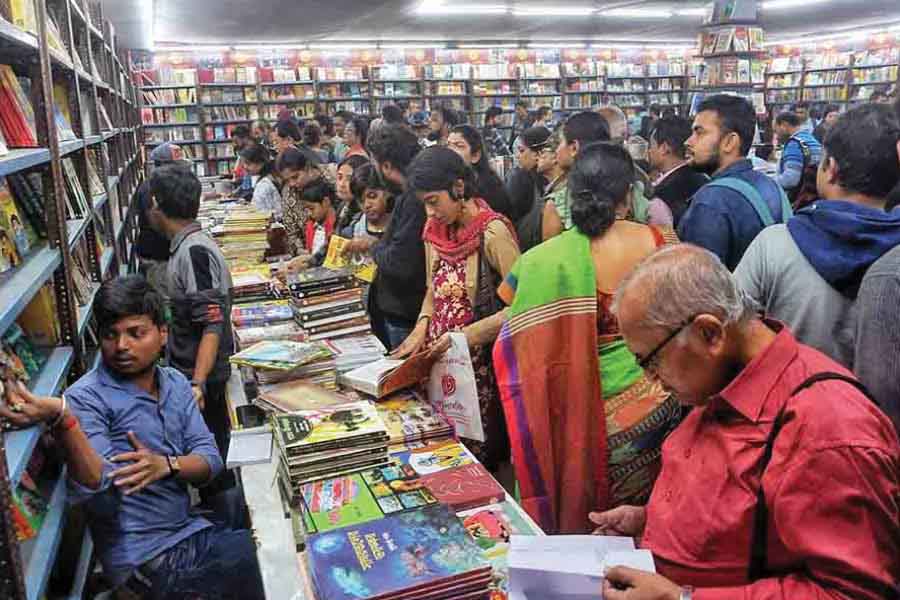
A book fair official said a large chunk of the book sale consisted of literary works and classics here unlike reference books and texts in other book fairs File photograph
Frankfurt Book Fair in Germany may be the world’s largest book fair in terms of business but Kolkata Book Fair is the biggest in terms of footfall. Actually, the fair has become the ‘go to place’ in January and turned out to be the biggest assembly of humans in the city after Durga Puja. In 2024, nearly 3 million people attended the fair.
Better connectivity
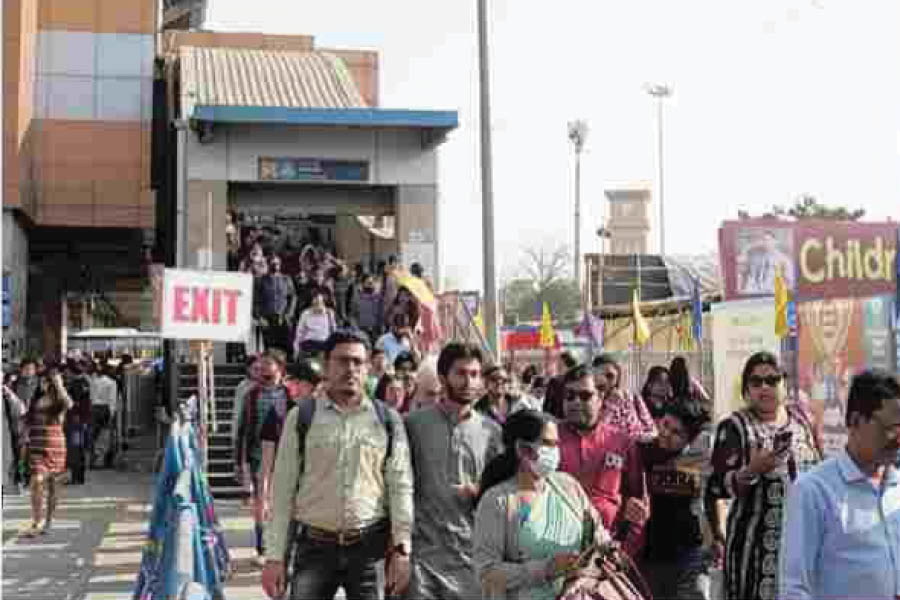
Passengers head for the Book Fair on getting off at the Karunamoyee Metro station File photograph
With a functional Metro around and proximity to a bus stand, the fair visitors generally have fewer problems in accessing public transport compared to earlier years. The proximity to railway line and shared auto service also has added to lessen connectivity chaos. People coming in private cars did not face much problem in parking.
Misses
Noise menace
Noise pollution continues to be a major menace in the fair with few stalls from various government departments, political outfits, academic institutes and commercial organisations merrily routinely broke noise norms by blaring microphones and playing high-decibel DJ. Neither the guild nor the West Bengal Pollution Control Board took any action despite a section of harried stall owners — 11 to be precise — complaining repeatedly. A senior official from the Guild admitted that managing noise was a failure this year and proposed to seek clear government directions about it from next year in the high-profile meeting that the chief secretary convenes before the fair.
Facilities for the differently abled
Most of the stalls did not have any ramp to enable differently-abled people as well as the elderly who cannot walk and need wheelchairs to access the interiors of the stalls. Also there were complaints of less than adequate toilet facilities for them. A stall owner complained that the contractor engaged by the Guild had little idea of what a ramp means or how it is beneficial. A senior official of the Guild admitted the allegation and pointed out that the error would be rectified from next year, including setting up more toilets for this special category of people.
Dust problem
Dust pollution has long been a perennial prick for the book fair, as mainly on that ground, it was once shifted from the Kolkata Maidan under a judicial order. Generally, poor air quality at this time of the year, coupled with re-suspension of dust triggered by thousands walking around the fair turned the situation more toxic. It was once declared unfit for the elderly and children by the West Bengal Pollution Control Board. Spreading of dust suppressants, putting more grass on non-concretised land surface may minimise the problem.
Recommendations
Time shift
To ensure better business, the fair may be pushed back a bit to accommodate the first week of February. Guild officials are already contemplating to share the proposal to the chief minister. If they have their way, the fair may start around Republic Day next year.
Better direction
Many of the visitors were found searching for the direction of their target stalls this year. In future, the Guild may think of setting up automated digital direction kiosks in several parts of the fair, especially in front of the gates, so that anybody can just finger touch the screen to find the direction of the stall he or she is searching. Guild officials say that they have a couple of static direction kiosks this year; but admit more are required.
Water points
The practice of distributing hundreds of thousands of drinking water pouches add to the plastic waste as well as wastage of water. The Guild may consider completely doing away with the pouches and instead, putting up free drinking water outlets at various points with paper glasses to use.
Pollution check
WBPCB should re-start the process of measuring and monitoring air and noise pollution within the fair as these inconvenience general visitors. The Guild must put green conditions in their ‘must to comply’ list of participants. Those willing to have musical soirees and likewise should be asked to do those indoors and the Guild may set up additional auditoriums to accommodate them.
Revenue push
The Guild may consider putting up some digital advertising space and use the generated revenue to partially subsidise the charge being levied on smaller book stalls and publishers. The space may also be used to promote new publications at a minimum cost.
Net-zero fare
As the climate concerns are galloping with every passing day and the concept of net-zero, which means negligible energy footprint, catching in; the Guild may consider turning the Kolkata Book Fair a climate friendly net-zero one in coming years, a huge advertisement not only for the fair but also for the city as it may set up a global landmark. The process needs initially to calculate the energy consumption of the fair; and then the Guild may take help of experts to minimise the footprints through a year round programme of putting solar, planting trees and likewise.
The US Pavilion at the 47th International Kolkata Book Fair wrapped up the annual event with a soulful event titled, US-India Arts to Fight Climate Change, on January 31. Through poetry, music and social commentary, the event brought forth critical points on the climate crisis, referencing works by prominent American authors. My Kolkata was there.
“We wanted to collate all the observations we have gathered at the US Pavilion over the course of the entire book fair, across science, news, dance and language. Through this event, we wanted to tie all our learnings together through art,” said US consul general Melinda Pavek.
